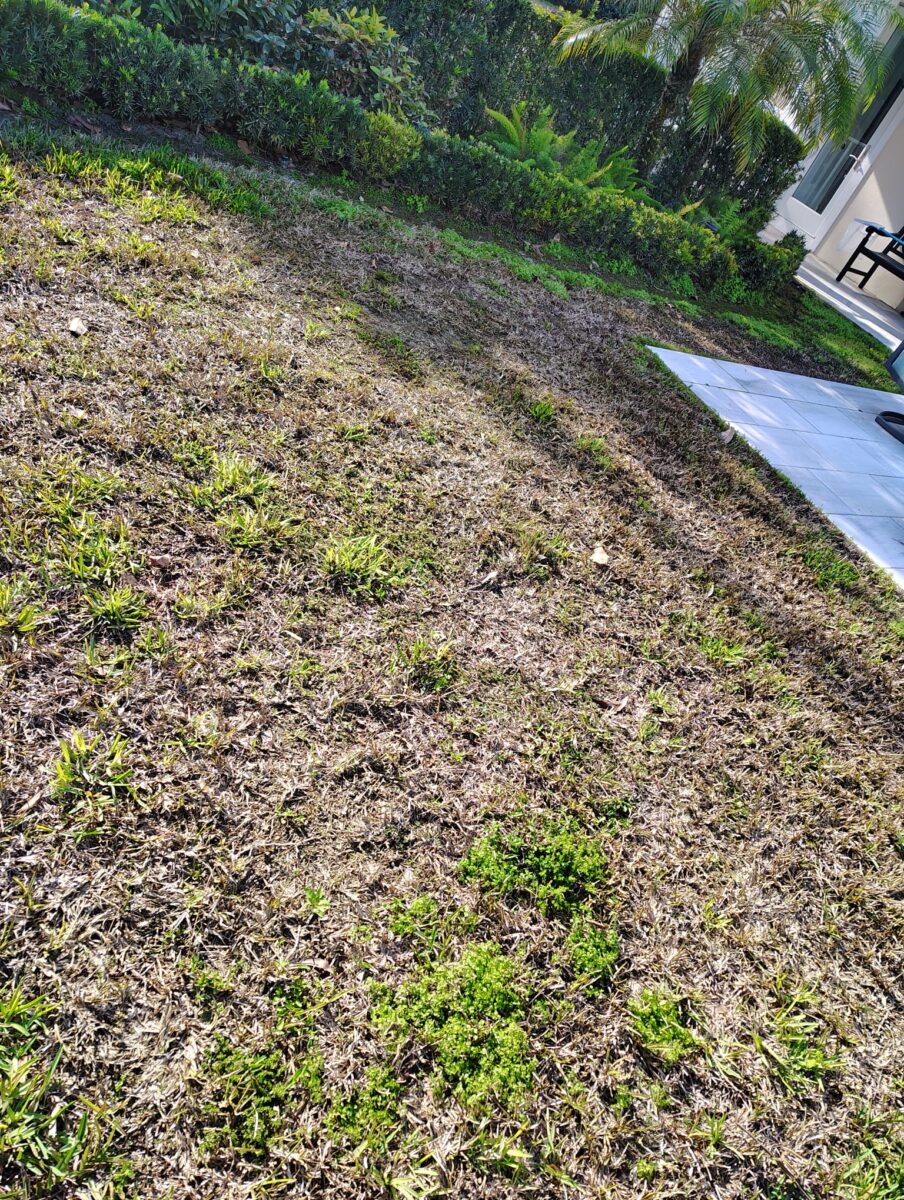Sometimes it’s obvious—your lawn looks like a patchy wasteland. Other times, the signs are subtle: thinning, discoloration, or bare spots that just don’t bounce back. So, how do you know when your Florida sod is beyond saving and replacement is the smarter option?
At Sunshine Sod, we help homeowners all across Florida determine whether a lawn can be revived or needs to be replaced. Here’s how to spot the signs—and what to do next.
Your Lawn Is Constantly Yellow, Brown, or Thinning
Discoloration that sticks around is a clear sign that something’s wrong. In Florida’s climate, this could be due to:
- Root damage from pests or fungus
- Poor drainage or overwatering
- Salt exposure (common near coastal areas)
- Old sod that’s lived out its lifespan
If your lawn stays dull or brown even after fertilizing, watering, and mowing properly, it’s probably time to start fresh.
You’ve Fought Every Pest… and Lost
Florida lawns are prime targets for chinch bugs, sod webworms, grubs, and mole crickets. Sometimes treatments work—other times, the damage is too far gone.
Warning Signs:
- Yellowing in random, spreading patches
- Sod that lifts easily (grub damage)
- Bite marks or chewed blades (sod webworms)
If pest control hasn’t stopped the decline, new sod is likely the most efficient path forward.
There’s More Bare Dirt Than Grass
If large areas of your lawn are thin or bare—even after reseeding or patching—you’re wasting time and money trying to revive it.
New sod:
- Establishes quickly
- Provides even, full coverage
- Restores curb appeal in a matter of days
Especially in high-visibility areas like front yards, a full replacement often makes more sense than endless patch jobs.
The Soil or Grade Is All Wrong
Sometimes it’s not the sod’s fault—it’s what’s underneath.
Issues like:
- Hard, compacted soil
- Poor grading that leads to puddles or runoff
- Excessive thatch buildup from years of neglect
These problems prevent your sod from taking root and thriving. If you’re correcting the soil anyway, it’s a great time to install new sod on top of a fresh, clean base.
Your Sod Is Just… Old
Yes, sod has a lifespan. Even in Florida, where grass grows year-round, your lawn won’t last forever.
- St. Augustine lawns can last 10–15 years
- Bahia may last longer in low-traffic areas
- Zoysia often needs refreshing after 10+ years, especially if shaded or compacted
If your sod is past its prime, replacing it will be easier and more cost-effective than trying to prop it up year after year.
Should You Patch Instead of Replace?
There are times when patching is the smarter short-term move:
Small area (under 100 sq ft)
You know the cause of the damage (e.g., one-time event)
The rest of your lawn is healthy and lush
If the damage is widespread, recurring, or systemic, full replacement gives you a clean slate—and far better results long-term.
When Is the Best Time to Replace Sod in Florida?
Florida’s climate gives you two ideal windows:
- Spring (March–May): Ideal for root growth and mild temps
- Fall (September–November): Less stress from heat, still warm enough to root
Summer replacements are possible but require frequent watering and close monitoring.
We Make Florida Sod Replacement Easy
At Sunshine Sod, we:
- Help you choose the best grass for your soil, sun, and usage
- Deliver fresh-cut sod straight from our farms
- Offer guidance on removal, prep, and installation
- Provide tips for care in Florida’s heat and humidity
Whether you’re replacing 500 sq ft or your entire yard, we’ll help you bring it back to life—quickly, cleanly, and beautifully.
Ready to refresh your lawn? Contact Sunshine Sod for a free sod replacement quote today.



